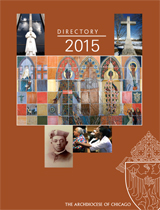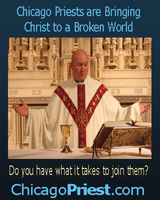May 24, 2009
Catholic Poles dedicate memorial to massacre victims
Polish people in the Archdiocese of Chicago finally have their own Katyn Forest massacre monument. After nine years of collecting money, debating on the final design, comparing it to similar monuments in Poland and to those on American soil, the dedication of Katyn’s monument took place on May 17 in St. Adalbert Cemetery in Niles.
It was in Katyn, part of the former Soviet Union, in 1940 that 22,000 intellectuals, military officers, teachers, landowners, factory owners, lawyers, priests and officials who represented the Polish elite were buried in a mass grave after being shot in the head. They were taken prisoner when the Soviet Union invaded Poland in September 1939 during World War II in support of the Nazis.
Many local people of Polish heritage turned out for the memorial dedication in Niles. The cemetery looked a little like Columbus Drive on Polish parade day in early May. There were red and white flags and flowers, people wearing folk costumes; there were children’s choirs singing religious and patriotic songs, and Polish scouts (Harcerze) serving the community during the fourhour ceremony. A woodwind and brass music ensemble provided the music and a group of Harley motorcyclists dressed in black leather outfits caused a traffic jam on Milwaukee Avenue while riding to the cemetery.
A cardinal visit
For this long awaited dedication, organizers here invited many guests from Poland, among whom was longtime primate of Poland Cardinal Jozef Glemp.
Now retired, Glemp served as archbishop of Warsaw, Poland, from 1981 through 2006.
In his homily delivered to about 3,000 people, the cardinal said that Katyn symbolizes both cross and glory.
“Those who died in Katyn knew as well as we know today that the cross doesn’t signify defeat. We all know that there is a resurrection after death,” said Glemp.
Even though families never got back their relatives executed in Katyn, there was a time in the Polish history comparable to a resurrection. Katyn, the name of a wooded area near Smolensk in Russia, was a prohibited word in Poland during the communist government rule from the end of the war until 1989.
The truth about the massacre was suppressed both by the Soviet Union and by their post-war satellite regime in Poland. In 1989, then-Soviet leader Mikhail Gorbachev admitted that it was the Soviet secret police who executed the Poles, not the German army, which originally got the blame. Acknowledging the truth about what happened at Katyn was a type of resurrection for the Polish people.
Influencing generations
The crowds at St. Adalbert Cemetery for the dedication represented three generations of Poles. It was a living testimonial demonstrating that Katyn is still alive in the hearts and minds of Poles.
The tragedy has different meanings for different generations. For some, like Wojciech Seweryn, president of the Katyn Monument initiative in Chicago, it represents lost family members.
For other Polish immigrants in their 30s and 40s who were not educated in school about Katyn because it was prohibited by the Polish government, it is a reminder that freedom is an earned value and has to be respected because it could be taken away. For the youngest it is a link to the roots and history of their parents and grandparents.
 Catholic
New World - Newspaper for the Archdiocese of Chicago
Catholic
New World - Newspaper for the Archdiocese of Chicago Archdiocese of Chicago Directory
Archdiocese of Chicago Directory Oficjalne wydawnictwo Archidiecezji Chicago w języku polskim
Oficjalne wydawnictwo Archidiecezji Chicago w języku polskim